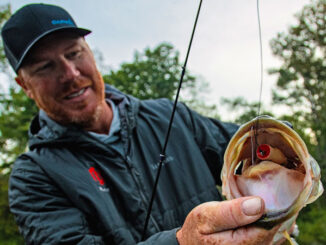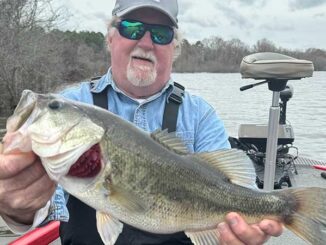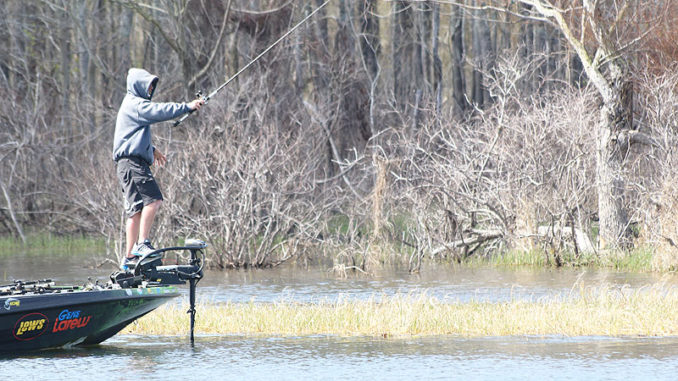
So how do tournament anglers catch winning sacks of fish, with only a few days of on-site practice? Darold Gleason and Tyler Carriere share some tricks of the trade.
Ever watch competitive cooking shows and think, “I have no interest in becoming a professional chef, but I just learned something I can use for the next family dinner?”
I do it all the time — picking up pointers on ingredient selection, preparation and cooking methods from folks who do professionally what I enjoy as a hobby.
The same logic applies to fishing; specifically the notion of learning how to dial in the most promising areas of a water body by tapping into the mental processes employed by folks who make a living with a rod and reel in their hands.
No doubt, tournament anglers and professional guides owe their livelihoods to their ability to determine where they’re most likely to find fish.
For those of us who love a bent rod, but spend far less time on the water, their strategies and disciplines can help us make the most of our days on the water.
Seasonal patterns
Toledo Bend guide Darold Gleason suggests starting with general seasonal patterns, as spawning cycles put fish in decidedly different areas than the dog days of summer. From there, he considers where the fish will drop their bags.
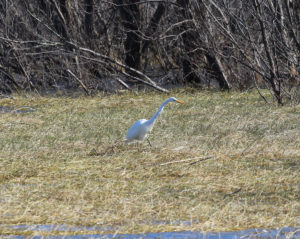
“Learn the kind of cover the fish are going to use (in a given season) because a bass is always going to use cover for ambush feeding,” Gleason said. “Do some Internet research and you’ll learn that Toledo Bend has timber and grass. Then you figure out what season you’ll be here, and you’ll know from your research whether you should be looking to begin with grass or begin with wood.
“For example, if you’re here in the spring, you’re looking more for the shoreline grasses, the hay grass and maybe the shallow milfoil. If you’re coming late summer to fall, you might be looking for hydrilla. As far as wood, you’re fishing brush piles and things like that and in the spring, you’re fishing stumpy flats, buck brush and cypress trees.”
In a big lake like the Bend, the sheer vastness of habitat can be overwhelming; but Gleason encourages anglers to dispel the notion of trying to fish everything.
Matching seasonal patterns with available cover is the way to go.
“When I’m traveling for tournaments, the pre-visit research with Google Earth helps me find banks that have grass and banks that have docks so I have a head start on it,” Gleason said. “But don’t be afraid to cover water. Usually, when we have our best days is when we cover water until we figure something out.
“So, if you haven’t had a bite in 30 minutes, don’t be afraid to pull up that trolling motor and go try something different — or go try the same thing somewhere else.”
Keep it moving
Much of the lake breakdown process can be crystallized into a simple concept: Forget about catching limits, and focus on amassing as many options as possible.
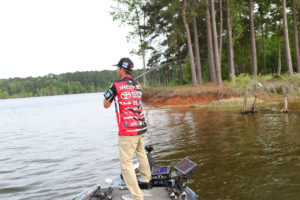
“I used to try and get a few bites in an area; now, I just run and try to get one bite in as many places as I can and then come back in a tournament and work on it from there,” Bassmaster Elite pro Tyler Carriere said. “With 2 1/2 days of practice (for an Elite event), you don’t have time to just fish one stretch and find out where the sweet spot is — you have to figure that out in a tournament.
“Like if you’re fishing a hydrilla point and you get a bite, don’t keep on going to see where else you can get a bite; you just want to run way across the lake and see if you can find another place like it and get a bite there. Then, in the tournament, you come back and work it over to find where your better places are.”
While Gleason definitely wants to catch fish in practice, he says his main objective is input. He wants to learn as much as he can, so his tournament can take a well-focused course.
“A lot of times, practice is culling water,” Gleason said. “So, if I go into an area and get a bite on a bait and run to another area and get a bite on the same bait or in the same depth of water, I may drop back completely and go try something completely different for a little while.
“What that does for me on tournament day is it keeps it fresh. I don’t want to wear myself out throwing one bait all the time, but have all these other lures and options on my mind. Along with culling water, I like to cull a lot of techniques in practice and get them out of my mind. Even if they don’t work in practice, I’m still learning what is working.”
Signs of hope
- Something different — Carriere knows he may catch a bass along a boring, straight bank; but his chances rise considerably when he targets the anomalies.
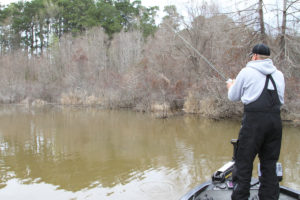
“I like cypress points that reach into the main lake; that’s your high-percentage areas,” he said. “Instead of just fishing down a straightaway, you want to find where the cypress trees make a point. You just want something different; it doesn’t have to be trees, it could be hydrilla, logs, anything that breaks up a straight bank.”
- Find the food — Bass will move for seasonal needs, but wherever they go, they will not wander far from their forage. Bream beds, docks and seawalls hosting shad spawns and free-roaming bait schools — these are key details to note when breaking down a lake.
“If you ever see those white cranes and egrets standing on the shoreline, you always want to fish over there because that means there’s a bunch of shad pushed up on the shore, so the bass will be up there eating,” he said. “Back home (the Atchafalaya Basin area), I’m fishing in 3 feet or less most of the time, so electronics don’t do you much good. So you have to rely on Mother Nature.”
Turn-offs
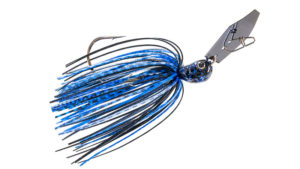
Lack of cover is Gleason’s clearest clue that he’s in the wrong area. Also, a general lack of activity — no bait, no birds, no fish busting. This is a trust-your-gut kinda deal, so if it doesn’t feel right based on logical inputs, wave goodbye.
For Carriere, snagging his baits and pulling up brown, dead grass vs. crisp, green vegetation tells him he’s in a lifeless area. Another sign simply requires the occasional afterward glance.
“Back home, we get a lot of dead water pulling out of the woods and when you go through it, the bubbles stay behind your boat forever,” Carriere said. “So, if you get that bad water with bubbles (in the prop wash) and that smell, you definitely want to evacuate that area immediately.”
Gauging the mood
Explaining how fish’s aggression level translates into bite intensity, Carriere says: “I definitely want to find the ones that are choking the bait, because those are the ones up there eating, whether it’s crawfish or shad. Whereas, if they’re just nipping at the bait, there might not be enough bait in the area to keep them ganged up and ready to eat. That’s why I try to find areas where the bait’s piled up, because that’s where your active fish are going to be.”
Gleason agreed and notes: “Generally, when you get around the fish, they’ll let you know. You’ll get some bites and you’ll see some activity. Whereas, if you run in a creek in the springtime and fish for an hour and you haven’t had a bite, you haven’t seen anyone around you catch one, you haven’t seen fish jumping or bait in the area; then it’s obviously time to change.
“But there are exceptions to this and if you go somewhere where it’s fishing very tough, you may have to change things up a bit more. Instead of running so much new water, you may have to change tactics by downsizing to smaller lures.”
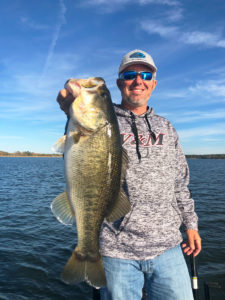
Other considerations:
- Wind — Prudent trip planning should always include an awareness of running conditions throughout the day. Monitoring wind speed and direction will help you block off portions of the lake that will be not only unfishable — but unreachable.
At Toledo Bend, for example; you really don’t want to cross that big lake when stiff winds whip it into bow-slapping nastiness. Therefore, if you know the afternoon’s gonna get ugly, you’ll be wise to launch on the side you plan on fishing later in the day. Even if that means trailering across in the morning, that extra road mileage will save you a tooth-rattling ride when the wind puts a lot of angry water between the two states.
- Inflows — Rains tend to wash muddy water into a lake, and that can work for or against you. Right after a heavy rain, the backs of creeks or anywhere storm water empties will often be too dirty to fish. However, after the inflow works its way into an area, the staining affect may pull fish shallow to feed aggressively.
Elsewhere, Carriere notes how a lake’s inflows can serve as positioning elements. Using Lake Verret near Morgan City as an example, he explains how to target the fish’s natural setup spots.
“You want to go to the north end where all the little bayous dump into the lake and fish the outer edges,” Carriere said. “Fish the cypress trees within a few hundred yards on each side of where the bayou comes into the lake.
“Even on the smaller lakes, I do the same thing. Try to go where you have the most water coming out of the river into the lake. The fish are going to come out of the river and go to the edges.”
- Recreational traffic — Do your homework and get to know a lake’s user groups. Everyone has equal rights to the resource, but heavy boat traffic muddies shorelines and makes certain offshore targets unfishable. Check local schedules for boat races or fishing tournaments, and identify where the weekend “party coves” are located (local tourism offices can help here).
Regardless of where you fish, a lake’s potential is best unlocked with a well-founded game plan and a disciplined search. Put in your time, pay attention to the signs and before long, you’ll have a clear picture of where and when to fish the key areas.
The bait balance
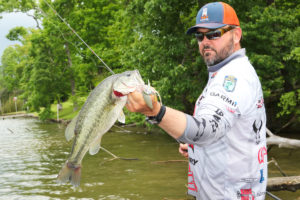
Power fishing to cover water versus targeted presentations — both can serve valuable roles for your lake breakdown efforts. Toledo Bend guide Darold Gleason notes that, while covering water is usually the preference most of the year, spring may shift the emphasis.
“If we’re talking about spawning time, a lot of times you do have to slow down and pick apart your areas to see what’s there because the fish’s bite radius isn’t as big when they’re spawning. They’re chasing not out of hunger, but out of anger, so that shrinks their strike zone.
“If the spawn is a part of the equation, I’m probably going to do a little more flipping or casting with a V&M flipping jig or a Texas-rigged V&M J Bug. But even then, I’ll have a spinnerbait or bladed jig tied on and I’ll mix in covering some water if I can.”
Just consider that breaking down a lake several days before a tournament — or weekend to weekend, for casual anglers — might mean fishing drastically different conditions than those in which you found the fish. That means a healthy dose of flexibility will serve you well.
“You may be throwing crankbaits in practice to cover water, but it seems like every time we have a tournament, a front hits and we have to slow it down,” Bassmaster Elite pro Tyler Carriere said. “I’ve had it happen numerous times when we were cranking in practice and then in the tournament, you had to do a 180 and use a dropshot or a jig.”
The takeaway: Finding areas with fish is the number one goal of lake breakdown, so catch ‘em however you can get bit. If the weather changes, the fish won’t completely abandon an area; they’ll simply adjust with the conditions. Knowing where they are enables you to make the key changes necessary to earning those bites.
“Most of the time, if you find them one weekend and you go back the next weekend and it’s different, you just have to change up a little bit,” Carriere said. “If you were fishing on an 80-degree day the week before and it’s in the 40s the next weekend, they’re probably still there; you just have to slow down.”
